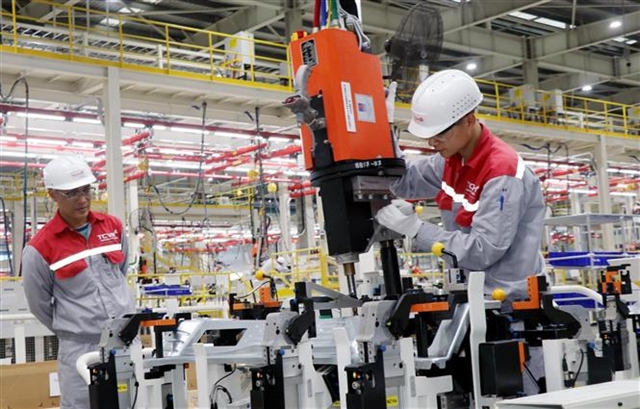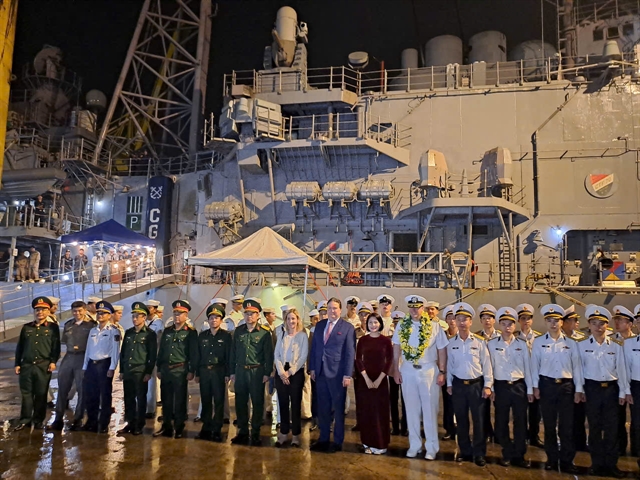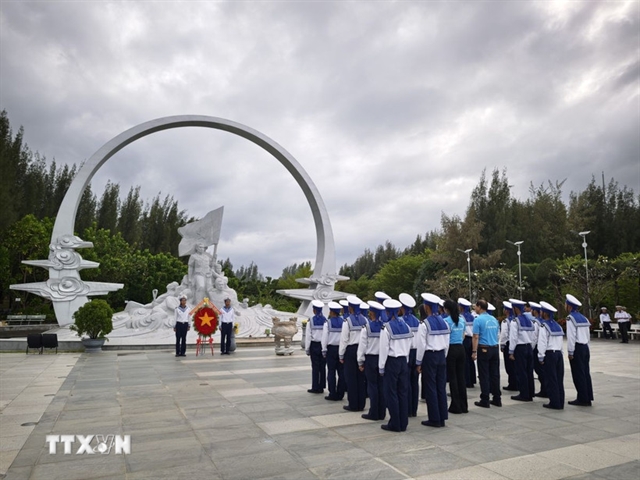 Society
Society
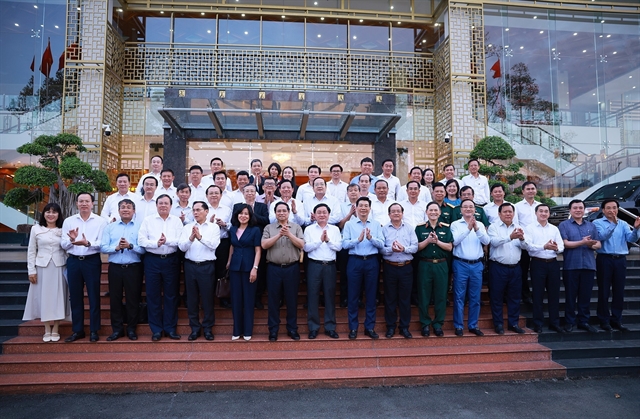
 |
| An research staff takes a water sample analysis at the Analysis Research and Education Centre in Hà Nội on Tuesday.— VNS Photo Nguyễn Hằng |
HÀ NỘI — The Analysis Research and Education Centre was inaugurated on Tuesday morning at the Vietnam National University (VNU), Hà Nội campus in Hòa Lạc Area, marking a major milestone in scientific and technological collaboration between Việt Nam and Japan.
The centre is a core component of the project Development of Easy-Operation High-Tech Analytical Devices and Human Resources for Food Safety and Environmental Quality Control under the SATREPS programme.
It is funded through Japan’s non-refundable ODA and jointly supported by the Japan International Cooperation Agency (JICA) and the Japan Science and Technology Agency (JST).
The project is led by the VNU University of Science. Its goal is to develop advanced technologies for producing rapid and user-friendly analytical equipment, while strengthening human resources in food safety and environmental quality management.
Speaking at the event, President of VNU, Associate Professor Hoàng Minh Sơn, said the establishment of the centre is not only a significant milestone in the development of the Hòa Lạc Urban Area, but also a powerful affirmation of VNU’s strategic vision to take the lead in advancing cutting-edge science and technology, mastering modern analytical technologies and improving the quality of high-calibre human resources.
"These are essential foundations that will directly and effectively support the country’s sustainable development goals," he said.
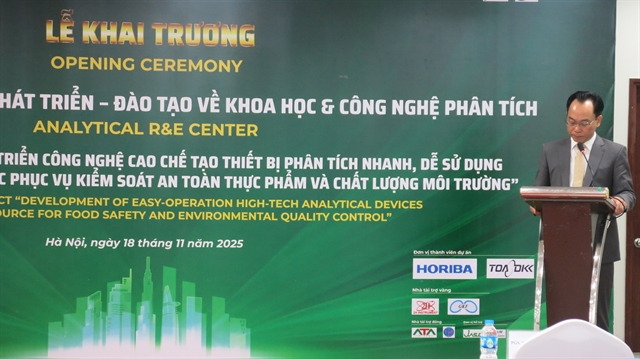 |
| President of VNU, Associate Professor Hoàng Minh Sơn delivers his speech at the event on Tuesday morning in VNU Hòa Lạc campus. — VNS Photo Nguyễn Hằng |
Professor Lê Thanh Sơn, Principal of the University of Science, said the project represented not only a technological investment but also a testament to a sustainable and trustworthy partnership between Việt Nam and Japan, aimed at improving food safety and environmental quality in Việt Nam.
Located in the Hòa Lạc Hi-Tech Park, the centre has been established as a Joint Việt Nam–Japan Research Facility and is considered the heart of the SATREPS programme.
It brings together leading scientists and experts to advance three strategic pillars of analytical engineering technologies, human-resource training and data science.
The University of Science pledged to make effective use of the scientific capacity and resources invested, striving to turn the centre into a model of international cooperation in science and technology.
On-site analysis
Việt Nam’s rapid economic growth in recent years has intensified water and air pollution due to industrialisation.
Traditionally, analysing pollutants required laboratory-based testing, which was costly, time-consuming and limited timely responses.
The project aims to address the challenge by fostering collaboration between Vietnamese and Japanese experts to develop microfluidic and electrochemical detection technologies, enabling on-site analysis of environmental quality.
The Japan Analytical Instruments Manufacturers’ Association (JAIMA) has also dispatched experts to deliver capacity-building training under the project.
At the ceremony, congratulatory remarks were delivered by Professor Hoàng Minh Sơn, President of VNU; Professor Lê Thanh Sơn and Ito Naoki, Ambassador of the Embassy of Japan in Việt Nam, all of whom expressed high expectations for the centre’s contribution to improving Việt Nam’s environmental quality.
Professor Nguyễn Văn Nội, the project manager, outlined four key tasks of the project, consisting of developing rapid and highly accurate on-site analytical technologies; upgrading the first environmental monitoring stations in one province before scaling up to 34 provinces; implementing training programmes for officials in environmental management and food safety; and applying big data, IoT and artificial intelligence in analytical science.
Professor Mawatari Kazuma of Waseda University, Chief Advisor to the project, said that Japanese partners, including Waseda University, had already provided analytical equipment capable of detecting heavy metals.
In the initial phase, Japanese and Vietnamese researchers will work together to develop new techniques and devices capable of detecting previously unmeasurable substances in air and food.
The project runs from October 2023 to October 2028. — VNS


